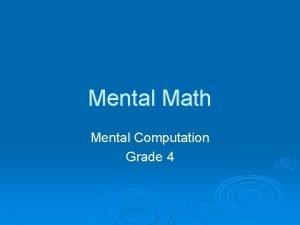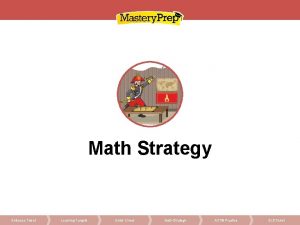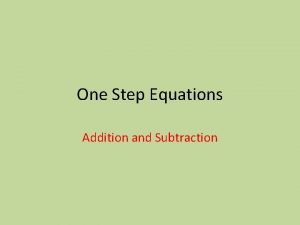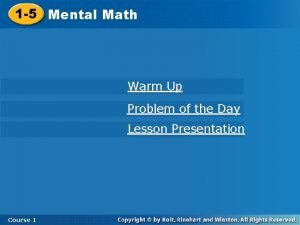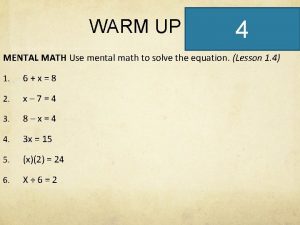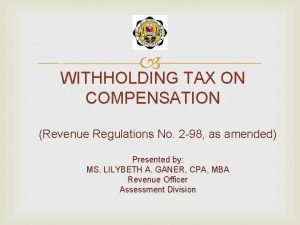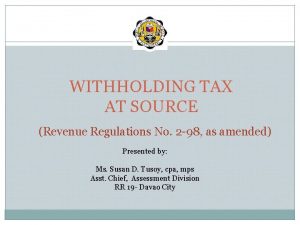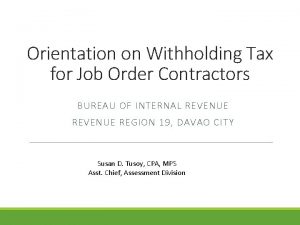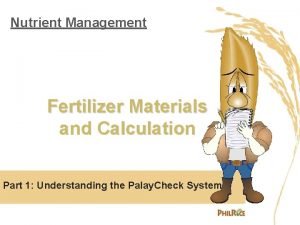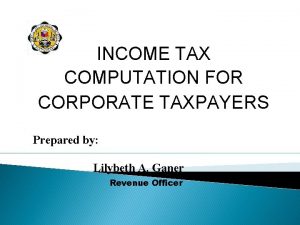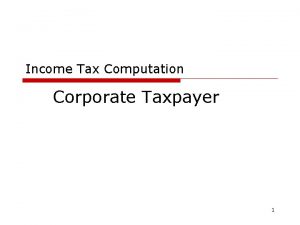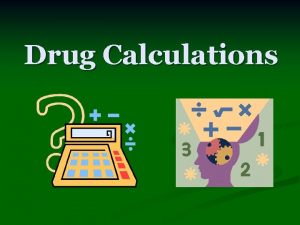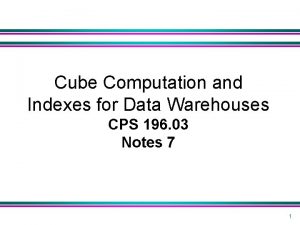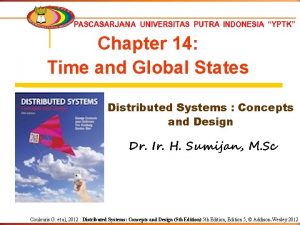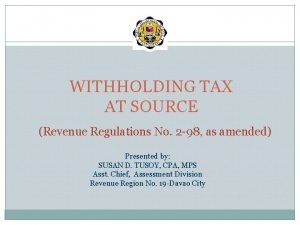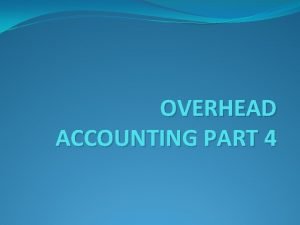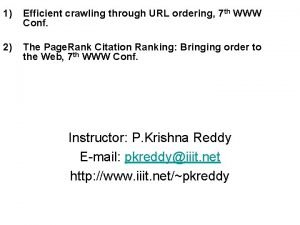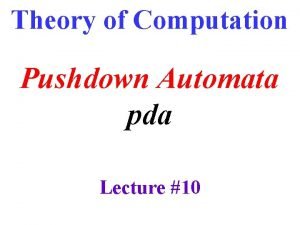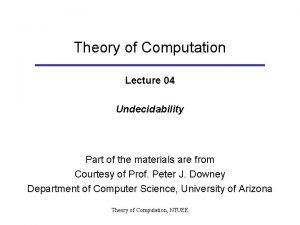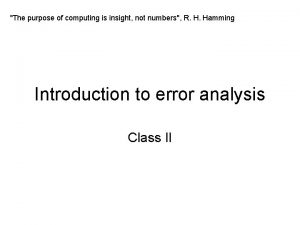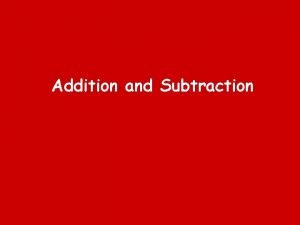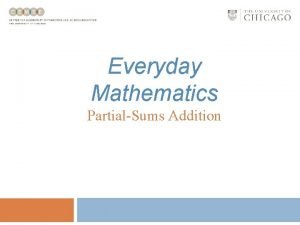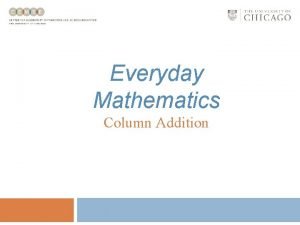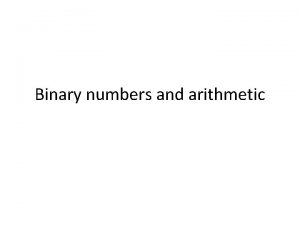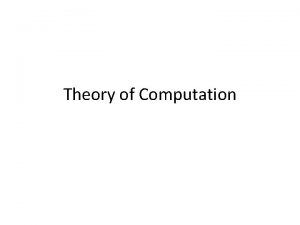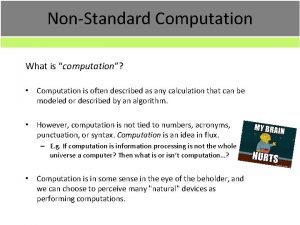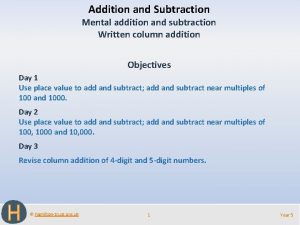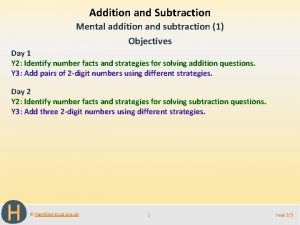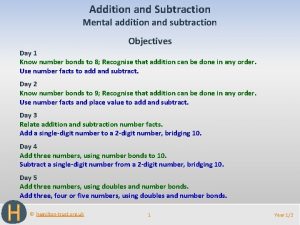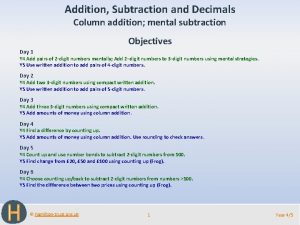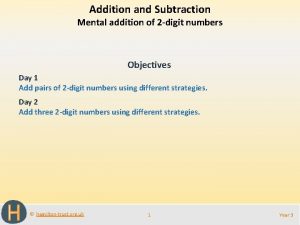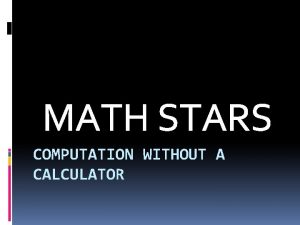Mental Math Mental Computation Grade 4 Quick Addition















































- Slides: 47

Mental Math Mental Computation Grade 4

Quick Addition This strategy can be used when no regrouping is needed. Ø Begin at the front end of the number. Ø Example: 71 + 12 Ø Think: add the 7 from 71 and the 1 from Ø 12 to get 8, then add the 1 from the 71 and the 2 from the 12 to get 3. The answer is 83. Ø Then this is applied to sums involving thousands.

Quick Addition 73 + 26 32 + 54 61 + 35 723 + 134 406 + 202 72 + 13 64 + 32 292 + 702 534 + 435 342 + 232

Quick Addition 6621 + 2100 1452 + 8200 4423 + 1200 300 + 2078 7600 + 2064 6334 + 2200 5200 + 3700 6245 + 1712 4678 + 3211 6621 + 2100

Front End Addition Ø Add the highest place values and then add the sums of the next place values. Example: 37 + 26 Ø Think: 30 and 20 is 50, 7 and 6 is 13, and Ø 50 plus 13 is 63. Example: 450 + 380 Ø Think: 400 and 300 is 700, 50 and 80 is Ø 130, and 700 plus 130 is 830.

Front End Addition 34 + 18 15 + 66 53 + 29 74 + 19 190 + 430 340 + 220 470 + 360 607 + 304 4200 + 5300 7700 + 1100

Front End Addition 67 + 22 42 + 45 561 + 220 6300 + 1800 6100 + 2800 5200 + 3400 7800 + 2100 3200 + 4500 4700 + 2400 10 300 + 4400

Finding Compatibles Ø Look for pairs of numbers that add easily to make a sum that will be easy to work with. Last year, we looked for numbers that added easily to 100. This year, we need to look for numbers that add easily to 1000. Ø Example: 400 + 720 + 600 Ø Think: 400 and 600 is 1000, and 1000 plus 720 is 1720.

Finding Compatibles 60 + 30 + 40 75 + 95 + 25 300 + 437 + 700 800 + 740 + 200 900 + 100 + 485 310 + 700 + 300 750 + 250 + 330 200 + 225 + 800 342 + 500 600 + 400 + 230

Finding Compatibles 25 + 47 + 75 75 + 98 + 25 55 + 50 300 + 445 + 700 800 + 200 + 789 400 + 983 + 600 989 + 900 + 100 878 + 500 100 + 234 + 900 353 + 700 + 3000

Break Up and Bridge Ø In this strategy, you leave the first number as it is and then add the place values from the next number one at a time. Example: 45 + 36 Ø Think: 45 and 30 (from the 36) is 75, and 75 Ø plus 6 (the rest of the 36) is 81. Example: 537 + 208 Ø Think: 537 and 200 is 737, and 737 plus 8 is Ø 745.

Break Up and Bridge 37 + 45 38 + 43 72 + 28 325 + 220 439 + 250 142 + 202 301 + 435 506 + 270 370 + 327 747 + 150

Break Up and Bridge 71 + 28 36 + 42 48 + 51 106 + 31 412 + 26 703 + 140 335 + 431 214 + 72 526 + 331 605 + 224

Compensation Ø Change one number in a sum to a nearby ten or hundred and then adjust the answer to compensate for the original change. Example: 52 + 39 Ø Think: 52 plus 40 is 92, but I added one too many Ø to take me to the next 10, so to compensate: I subtract one from my answer, 92 – to get 91. Example: 345 + 198 Ø Think: 345 + 200 is 545, but I added 2 too many, Ø so I subtract 2 from 545 to get 543.

Compensation 43 + 9 45 + 8 44 + 27 56 + 8 225 + 49 504 + 199 826 + 99 371 + 18 326 + 298 304 + 399

Compensation 56 + 8 65 + 29 125 + 49 412 + 499 526 + 799 621 + 103 534 + 104 461 + 101 342 + 102 710 + 105

Make 10 s, 100 s, or 1000 s Ø This strategy adds to one addend to make 10, 100, or 1000. Example: 58 + 6 Ø Think: 58 + 2 (from the 6) is 60 plus 4 (the other Ø part of 6) is 64. Example: 350 + 59 Ø Think: 350 plus 50 (from the 59) is 400, and 400 Ø plus 9 (the other part of 59) is 409. Example: 7400 + 790 Ø Think: 7400 plus 600 (from the 790) is 8000, and Ø 8000 plus 190 (the other part of 790) is 8190.

Make 10 s, 100 s, or 1000 s 680 + 78 570 + 41 560 + 89 490 + 18 450 + 62 2800 + 460 8900 + 230 3600 + 522 5900 + 660 3500 + 590

Make 10 s, 100 s, or 1000 s 870 + 57 170 + 40 630 + 73 780 + 67 4700 + 470 1700 + 870 2200 + 910 6300 + 855 4800 + 450 1800 + 770

Subtraction – Quick Subtraction Ø This strategy should be used when no regrouping is needed. Ø Begin with the front end number. Ø Example: 86 – 23 Ø Think: 8 take away 2 is 6 and then 6 take away 3 is 3. The answer is 63.

Quick Subtraction 38 – 25 27 – 15 97 – 35 78 – 46 745 – 23 947 – 35 357 – 135 845 – 542 452 – 311 624 - 112

Quick Subtraction 82 – 11 76 – 34 85 – 31 48 – 23 846 – 324 537 – 101 704 – 502 809 – 408 639 – 628 8605 - 304

Back Through the 10/100 Extension Subtract a part of one of the numbers to get to the nearest tens or hundreds, and then subtract the rest of the number. Ø This strategy is probably most effective when one of the numbers is not too great. Ø Example: 74 – 6 Ø Think: 74 subtract 4 (one part of the 6) is 70 and Ø 70 subtract 2 (the other part of the 6) is 68. Example: 530 – 70 Ø Think: 530 subtract 30 (one part of the 70) is 500 Ø and 500 subtract 40 (the other part of the 70) is 460.

Back Through the 10/100 15 – 6 13 – 4 13 – 6 74 – 7 850 – 70 420 – 60 760 – 70 970 – 80 340 – 70 320 - 50

Back Through the 10/100 42 – 7 61 – 5 15 – 7 97 – 8 34 – 7 810 – 50 630 – 60 462 – 70 852 – 70 424 - 60

Up Through 10/100 This strategy is an extension of the “counting up through 10” strategy that you learned in Grade 3. Count the difference between the two numbers by starting with the smaller and adding to this amount the rest of the distance to the greater number. Ø This strategy is most effective when the two numbers in the question are close together. Ø Example: 84 – 77 Ø Think: It is 3 from 77 to 80 and 4 from 80 to 84; therefore, Ø the difference is 3 plus 4, or 7. Example: 613 – 594 Ø Think: It is 6 594 to 600 and 13 from 600 to 613; therefore, Ø the difference is 6 plus 13, or 19.

Up Through 10/100 95 – 86 58 – 49 88 – 79 67 – 59 34 – 27 715 – 698 411 – 398 727 – 698 612 – 596 916 - 897

Up Through 10/100 62 – 55 46 – 38 71 – 63 42 – 36 61 – 56 846 – 799 817 – 798 513 – 498 631 – 597 716 - 699

Compensation Ø Change one of the numbers to the nearest ten or hundred, carrying out the subtraction, and the adjust the answer to compensate for the original change. Example: 56 – 18 Ø Think: 56 – 20 = 36, but I subtracted 2 too Ø many; so, I add 2 to the answer to get 38. Example: 145 – 99 Ø Think: 145 – 100 is 45, but I subtracted 1 Ø too many; so, I add 1 to 45 to get 46.

Compensation 74 – 19 65 – 29 84 – 17 87 – 9 15 – 8 673 – 99 775 – 198 641 – 197 765 – 99 854 - 399

Compensation 83 – 28 92 – 39 73 – 17 18 – 9 534 – 398 802 – 397 721 – 497 953 – 499 647 – 198 444 - 97

Balancing for a Constant Difference Ø Ø This is a new strategy for Grade 4. Both numbers change to make subtraction easier by adding or subtracting. Example: 87 – 19 Ø Think: Add 1 to both numbers to get 88 – Ø 20; so, 68 is the answer. Example: 345 – 198 Ø Think: Add 2 to both numbers to get 347 – Ø 200; so, the answer is 147.

Balancing for a Constant Difference 85 – 18 78 – 19 88 – 48 83 – 21 95 – 42 649 – 299 912 – 797 631 – 499 971 – 696 659 - 204

Balancing for a Constant Difference 67 – 32 42 – 17 67 – 18 94 – 17 75 – 12 736 – 402 948 – 301 563 – 397 737 – 398 811 - 597

Break Up and Bridge Ø Begin with the first number (minuend) and subtract the second number (subtrahend) beginning with the highest place value. Example: 92 – 26 Ø Think: 92 subtract 20 (from the 26) is 72 Ø and 72 subtract 6 is 66. Example: 745 – 203 Ø Think: 745 subtract 200 (from the 203) is Ø 545 and 545 minus 3 is 542.

Break Up and Bridge 73 – 37 77 – 42 95 – 27 52 – 33 93 – 74 736 – 301 632 – 208 928 – 210 647 – 120 848 - 220

Break Up and Bridge 74 – 15 85 – 46 86 – 54 98 – 22 77 – 15 741 – 306 847 – 402 3580 – 130 927 – 605 758 - 240

Multiplication - Doubles Ø Connect the two times tables with doubling. 2 x 2 4 x 2 2 x 5 10 x 2 2 x 3

Multiplication – the fives Ø Think of the clock. Each number is 5 minutes. 5 x 3 5 x 6 5 x 2 1 x 5 7 x 5

Multiplication – the ones Ø NO CHANGE! l l When multiplying by one, make no change to the other number. 5 x 1=5 3 x 1 2 x 1 1 x 9 1 x 8 6 x 1

Multiplication – The tricky zeros Ø When a number, such as 2, is multiplied by zero, say to yourself – two groups of nothing is still nothing. 4 x 0 8 x 0 3 x 0 0 x 5 0 x 7

Multiplication – The Threes Double the number plus one more. Ø Example: 3 x 2 Ø Think: double two is four plus one more Ø two is six. 3 x 4 5 x 3 3 x 6 7 x 3 9 x 3

Multiplication – Four Facts Ø The double – double strategy Ø Example: 4 x 4 Ø Think: 4 x 2 = 8, 8 x 2 = 16 4 x 2 4 x 6 5 x 4 7 x 4 4 x 3

Multiplication – Sixes Multiply by 5 and add one more Ø Or double your threes. Ø Example: 6 x 2 Think: 5 x 2 = 10 plus one more 2 = 12 Or think: 3 x 2 = 6 plus 3 x 2 = 6 adds up to 12. 6 x 1 6 x 3 4 x 6 7 x 6 8 x 6

Multiplication - Sevens Multiply by 5 and add two more groups. Ø Example: 7 x 2 Ø Think: 5 x 2 = 10 and then add 2 x 2 = 4 for 14 Ø 7 x 4 3 x 7 7 x 5 1 x 7 6 x 7

Multiplication - eights Double three times. Ø Example: 8 x 8 Ø Think: 8 x 2 = 16, then 16 x 2 = 32, and then 32 plus 32 = 64. Ø 8 x 3 8 x 5 7 x 8 9 x 8 4 x 8

Multiplication – Nifty nines Multiply by ten and then subtract one group. Ø Example: 9 x 2 Ø Think: 10 x 2 = 20 subtract two equals 18. Ø 9 x 1 3 x 9 5 x 9 9 x 6 8 x 9
 Quick find vs quick union
Quick find vs quick union Collision forces quick check
Collision forces quick check Modeling computation discrete math
Modeling computation discrete math (67-18) divided by 7x3
(67-18) divided by 7x3 Vdoe quick checks
Vdoe quick checks Quick check math
Quick check math Quick check math answers
Quick check math answers One step equations addition
One step equations addition Hit the button
Hit the button Mental math warm up
Mental math warm up Mental math warm up
Mental math warm up Compensation computation
Compensation computation Expanded withholding tax computation
Expanded withholding tax computation Expanded withholding tax computation
Expanded withholding tax computation Job order tax
Job order tax Fertilizer computation philrice
Fertilizer computation philrice Sipser, m: introduction to the theory of computation
Sipser, m: introduction to the theory of computation How to compute mcit
How to compute mcit Income tax computation format
Income tax computation format Crystalloids and colloids examples
Crystalloids and colloids examples Income tax computation format
Income tax computation format Efficient methods for data cube computation
Efficient methods for data cube computation Drug calculation formula
Drug calculation formula Data cube computation
Data cube computation Data cube computation
Data cube computation How to calculate drop per minute
How to calculate drop per minute Cuts of a distributed computation
Cuts of a distributed computation Theory of computation
Theory of computation Expanded withholding tax computation
Expanded withholding tax computation Net maintainable rent
Net maintainable rent Board feet computation
Board feet computation Define transition graph
Define transition graph Types of languages in theory of computation
Types of languages in theory of computation The pagerank citation ranking: bringing order to the web
The pagerank citation ranking: bringing order to the web Pagerank computation
Pagerank computation Pagerank
Pagerank Binary search in secure computation
Binary search in secure computation Reminder symbol
Reminder symbol Over recovery of overheads
Over recovery of overheads Media computation
Media computation Theory of computation
Theory of computation Types of errors in numerical methods
Types of errors in numerical methods Pagerank computation
Pagerank computation Computation examples
Computation examples 7 tuples of pda
7 tuples of pda Theory of computation
Theory of computation The purpose of computation is insight not numbers
The purpose of computation is insight not numbers Privacy-enhancing computation
Privacy-enhancing computation



